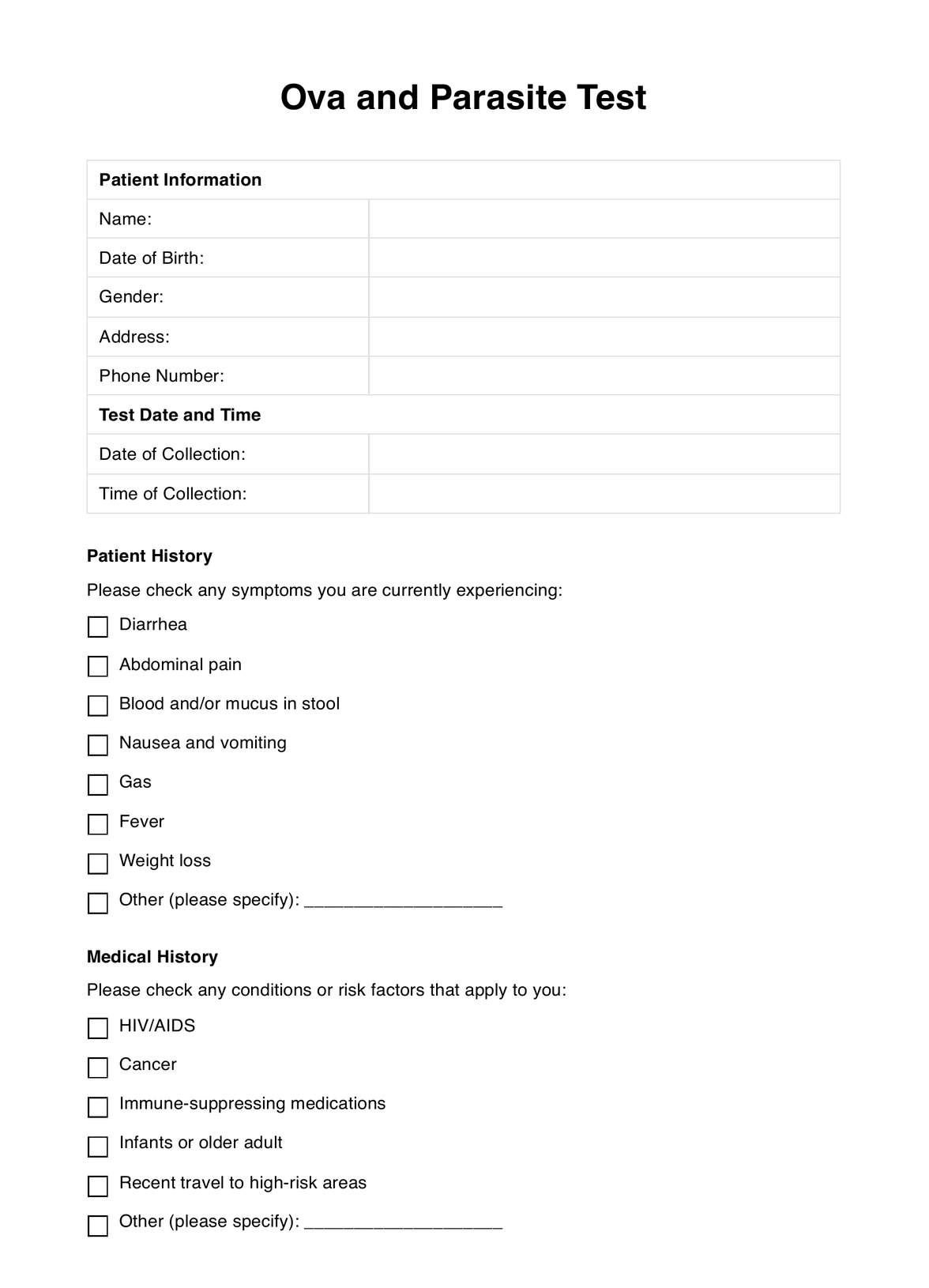Healthcare providers, such as doctors, nurses, and gastroenterologists, usually request these tests when a patient exhibits symptoms like diarrhea, abdominal pain, or unexplained weight loss, which could be linked to parasitic infections.

Ova and Parasite
Learn how the Ova and Parasite Tests aid in identifying a range of parasitic organisms. Get insights on its clinical utility & specimen collection.
Ova and Parasite Template
Commonly asked questions
These are used when there's a suspicion of parasitic infections. These tests are employed in various scenarios, including diagnosing individuals with gastrointestinal symptoms, evaluating travelers who might have been exposed to parasites abroad, conducting routine screenings in healthcare facilities, and investigating waterborne or foodborne illness outbreaks.
It involves collecting a stool sample from the patient, following specific instructions provided by a healthcare provider. The sample is then sent to a laboratory for analysis, where it is examined under a microscope to detect the presence of parasite eggs or cysts.
EHR and practice management software
Get started for free
*No credit card required
Free
$0/usd
Unlimited clients
Telehealth
1GB of storage
Client portal text
Automated billing and online payments











